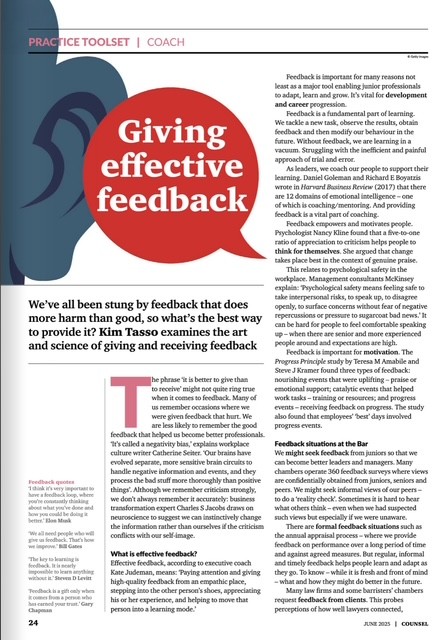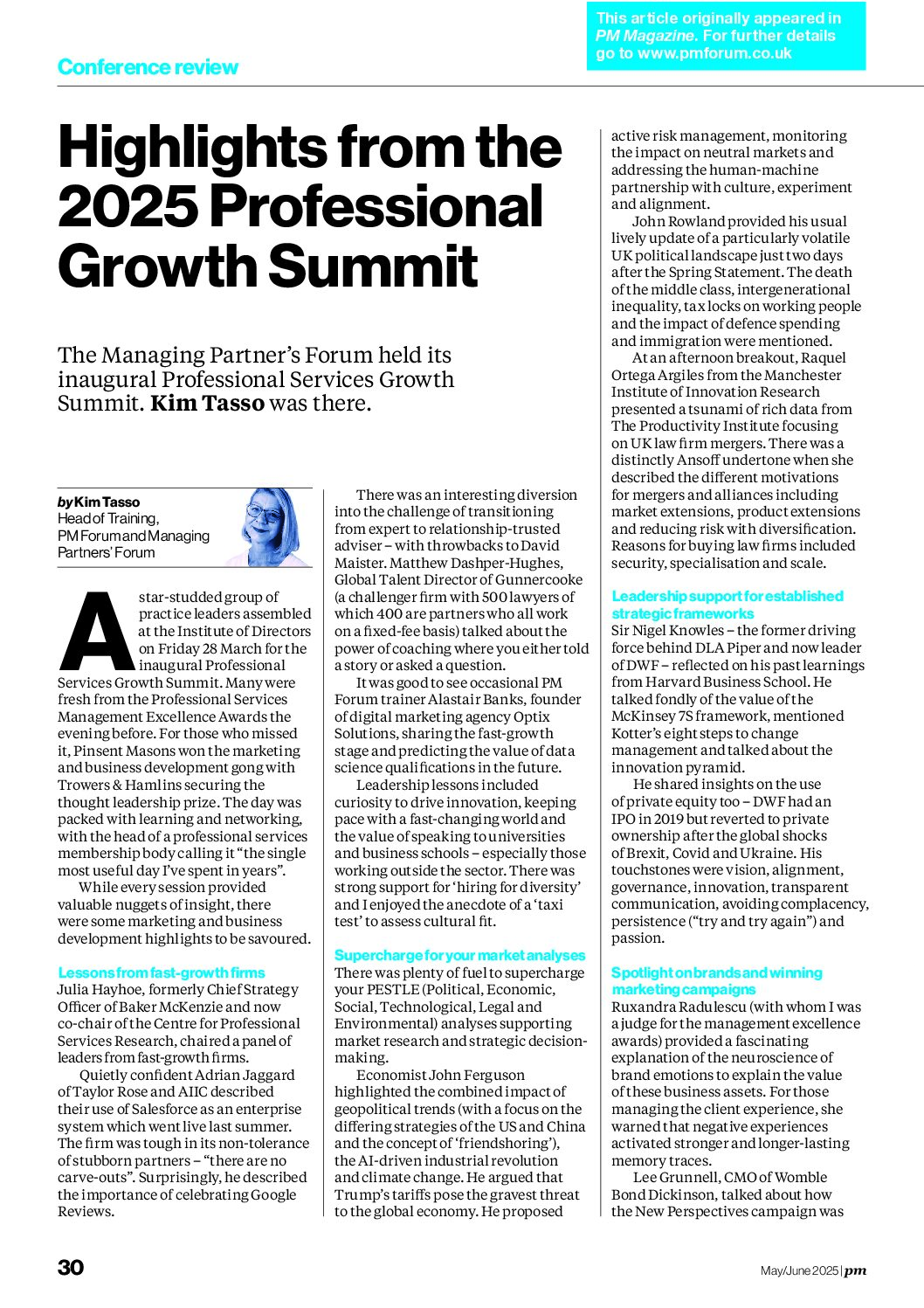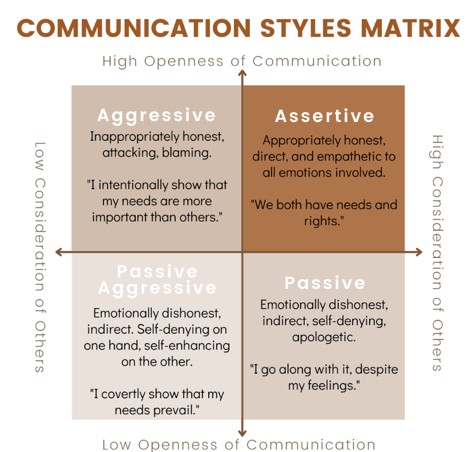
Earlier this year we ran the first “Commerciality – Finance, Pricing, Innovation and Research” workshop through Professional Marketing Forum. https://www.pmforum.co.uk/training.aspx. I am delighted to report that the consensus was that it was a success (even though we have some tweaks to make to the timing for all the group exercises).
Here are the highlights:
Aims of the delegates
At the start of the session, I asked what had bought the delegates to the session. I was interested to hear their aims which included:
- To help myself and my fee-earners to become more commercial
- To understand basic economic and financial knowledge
- To become more strategic (please note that there is a separate course on this, see http://kimtasso.com/be-more-onion-time-out-from-the-tsunami-and-other-strategy-insights/)
- To join and contribute to senior level discussions (see http://kimtasso.com/securing-your-seat-at-the-strategy-table/)
- To broaden my knowledge and skill base (see http://kimtasso.com/future-marketing-manager-t-shaped-people-senior-promotions-management-vs-leadership/)
- To shift from a technical to a commercial perspective
- To increase innovation at my firm
- To develop pricing strategies
- To move from a fixed to a growth mind set
- To learn how to make a commercial business case for new projects
- To help my firm move from a compliance and transaction operation to more advisory work
- To boost confidence to make a contribution to business development discussions
Anticipation
A key element of commerciality is anticipation.
We need to anticipate what will happen in the broader environment and markets. Business doesn’t take place in a vacuum – there are a host of external, macro factor in the environment (see, for example, http://kimtasso.com/environmental-analysis-slept-and-planning-future-of-jobs-report-2018-impact-of-technology/) as well as a variety of competitor activities.
Sometimes, we have to craft alternative scenarios of what might happen – and anticipate different future strategies to respond to them effectively. We also need to look beyond the trends and towards the outliers, which may be a weak signal of an imminent change or potential opportunity.
Anticipate what clients might need in the future. Of course, this is almost second nature to business development professionals as marketing is defined as “the management process responsible for anticipating client needs profitably”. While marketers – who often lead market research and client listening programmes – are good at anticipating client needs, there is often a need for a better understanding of what drives profitability.
Curiosity
Curiosity is a valuable attribute in market research, selling and relationship building.
Commercial people will gain a deeper understanding of their business, markets and clients by asking questions.
Successful leaders will drive their businesses forward by challenging the status quo with “Why?” questions. And they will encourage people to look to the future by constantly asking “What next?”.
Risk
Another element of successful anticipation is an assessment of risk.
There are all manner of cognitive biases that make us, for example, follow what others are doing (bandwagon effect), value what we have more than what we might gain (loss and reward bias), seek information that supports our beliefs (confirmation bias) and avoid letting go of past projects (sunk costs bias).
While it is relatively straightforward to build a business plan or produce a cost-benefit analysis for a new project, understanding the risks is less easy. And firms will have a different appetite when it comes to choosing between higher returns/risks or lower returns/risks.
Once identified, there needs to be a risk management plan to consider what action might be taken to minimise or mitigate potential risks.
Mental models and boundaries
People who have always worked in professional services will have many unconscious models of the way the business should be run. They may have artificial boundaries that limit their thinking.
During the discussions about innovation, we explored our dominant mental models and how they could constrain our thinking. We talked about the “creating swiping” (Tom Peters) of models and ideas from unrelated industries into our own. So having experience outside of the professions is a distinct advantage.
Economics and finance
We brainstormed and discussed the main theories and ideas in economics and finance including
Economics
- Value exchange and the relationship between the client and the firm
- Supply and demand and the impact on pricing
- Scarcity and the impact on competition
- Macroeconomics and the impact on different markets
- Microeconomics and the impact on companies and individuals
- Major economic cycles (e.g. Kondratiev waves) and the implications for planning
- The importance of international trade
- Principles of capitalism (free markets, capital and labour)
Finance
- Profit before and after tax
- Assets and liabilities
- Reserves for investment
- Working capital and capital expenditure
- Liquidity and cash flow management
- Fixed costs and overheads
- Variable costs (particularly salaries in professional service firms)
- Relationship between forecasting and budgeting
Pricing
Within groups, we tackled similar pitch pricing exercises where just one of the variables changed to see the range of prices agreed. This drove an interesting discussion about cost and value, capacity and opportunity cost, market leadership and premium pricing, confident and nervous clients, volume and value as well as strategic and tactical pricing strategies.
Key takeaways
At the end of the session, I asked delegates what they had found most useful and interesting.
- Three simple questions to encourage strategic thinking
- Greater understanding of profitability
- Financial fluency
- Challenge the status quo
- Understanding Return on Investment (ROI)
- Watch for weak signals
- Increased confidence to participate in strategic and commercial conversations
- How to read company accounts
- The importance of curiosity
- Value in pricing decisions
- Research opportunities
- Broader business perspective









